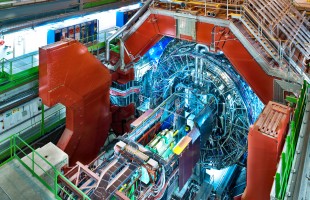At CERN, lead nuclei have been going around the LHC accelerator at full beam power for the first time since early this week. The lab in Geneva announced that today.
The lead beams are primarily intended to create collisions in the ALICE detector, which studies the properties of quark-gluon plasmas. But the other major detectors, ATLAS and CMS are also studying collisions.
In such collisions, nuclei fuse and the quarks and gluons from the core particles form a form of matter that presumably must have also existed shortly after the Big Bang.

The lead experiments began earlier than planned this year after a leak in the LHC accelerator in the summer that had to be repaired first. Then there was too little time to return to proton beams first for the benefit of ATLAS and CMS.
Without the incident, lead would not have been up until the end of the year. The current extra lead-lead beams are very welcome for ALICE, as there was no room for them in last year’s planning as the winter break was extended because of high power prices.
Nikhef is closely involved with ALICE. Nikhef researcher Marco van Leeuwen is currently spokes person for the experiment, in which dozens of countries and thousands of researchers are participating.
